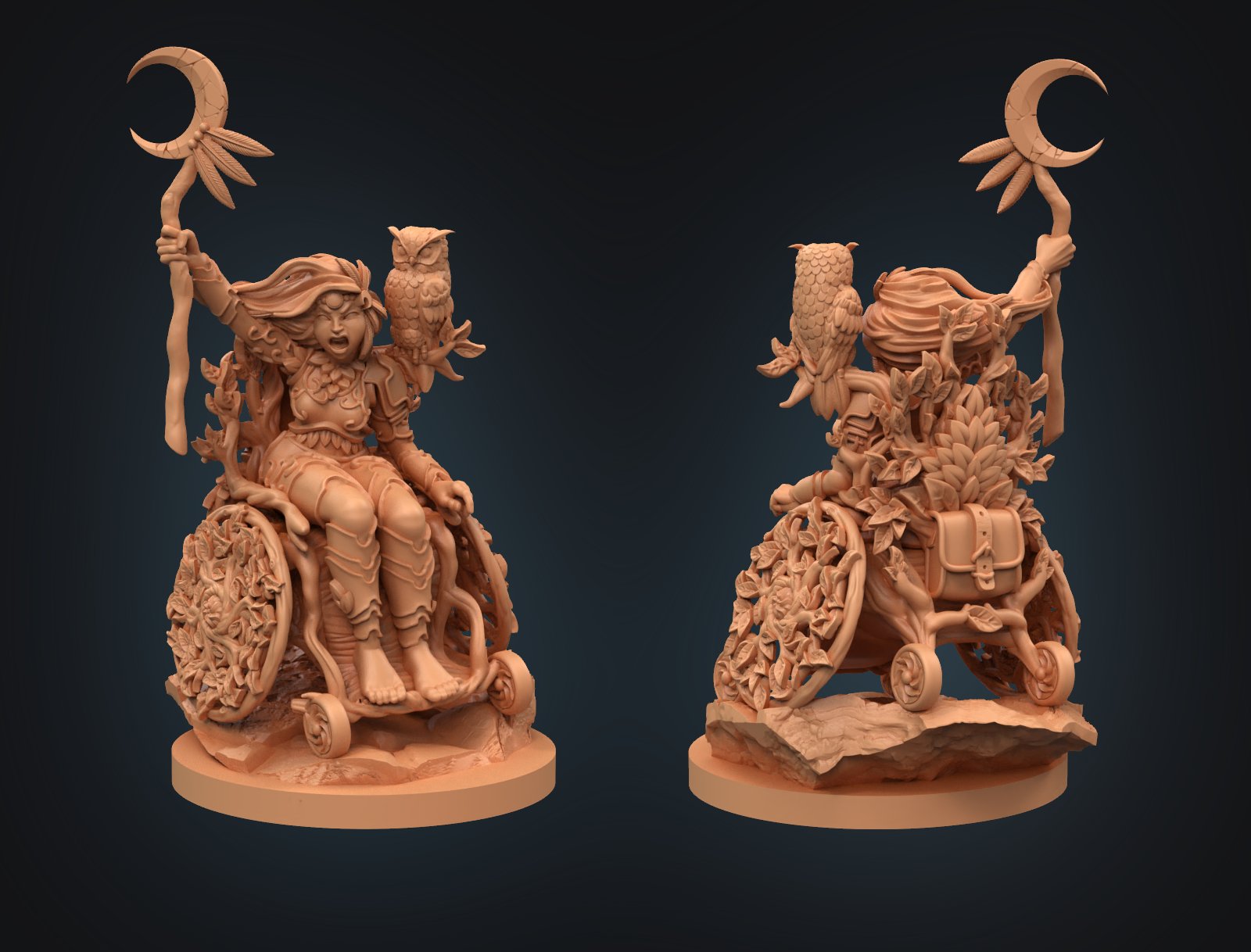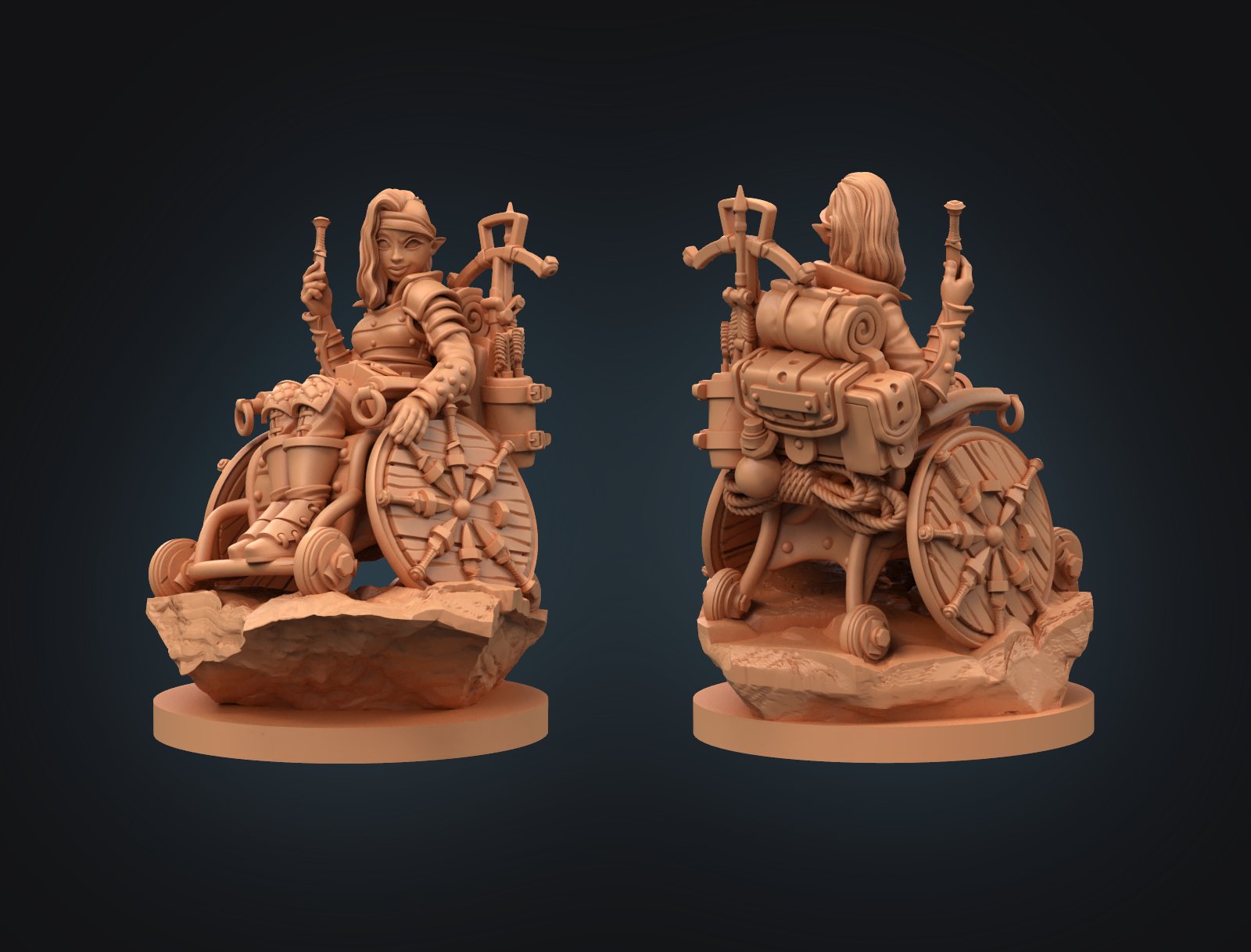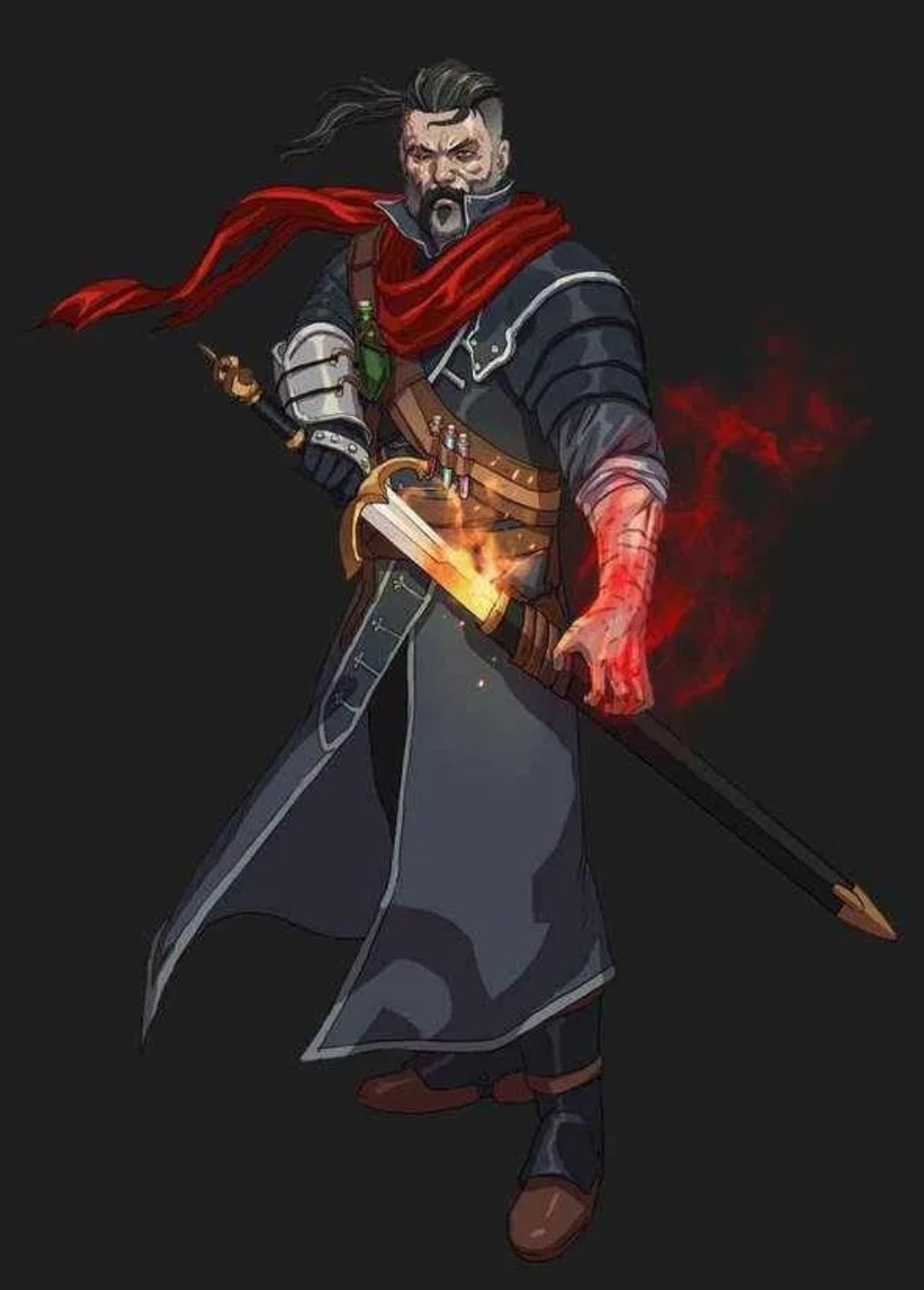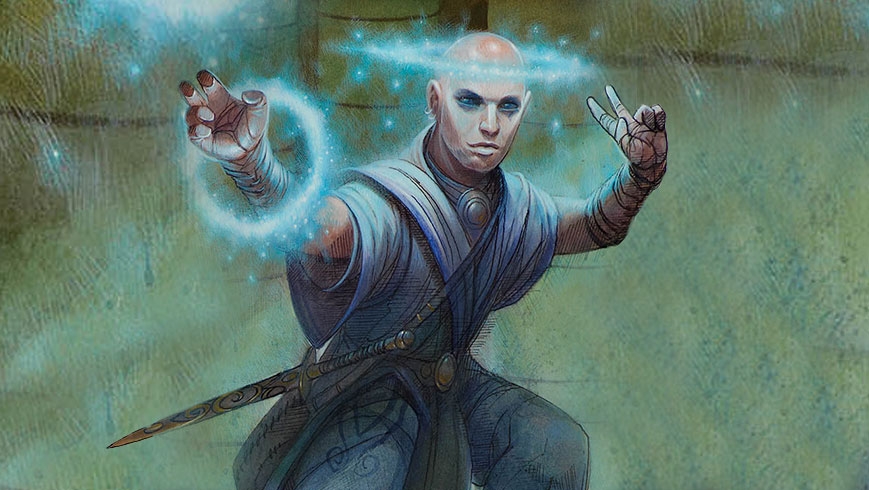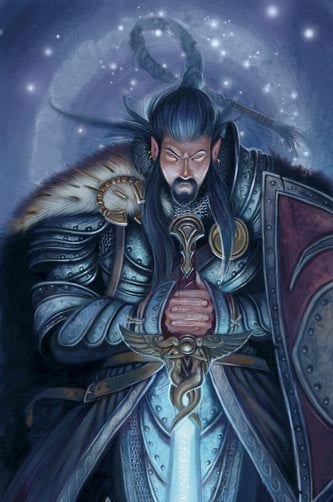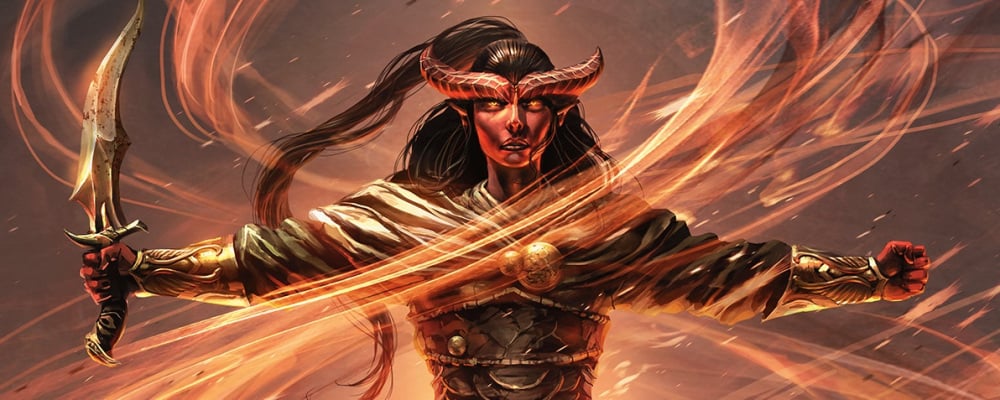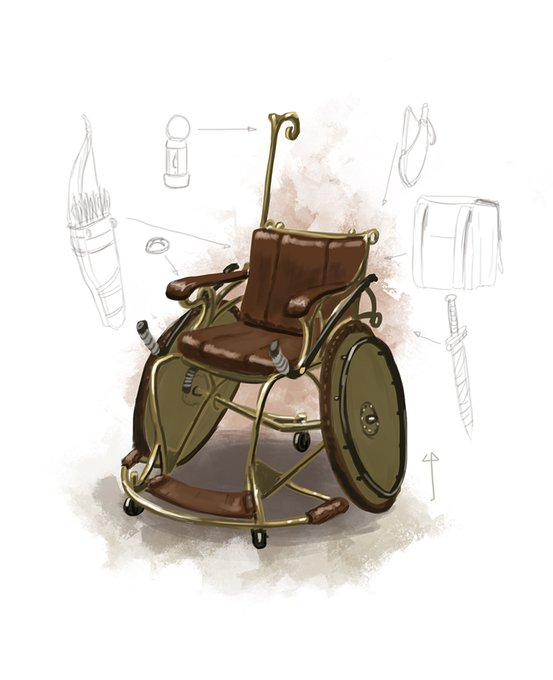D&D: The Combat Wheelchair’s Version 2.1 Adds Four New Subclasses
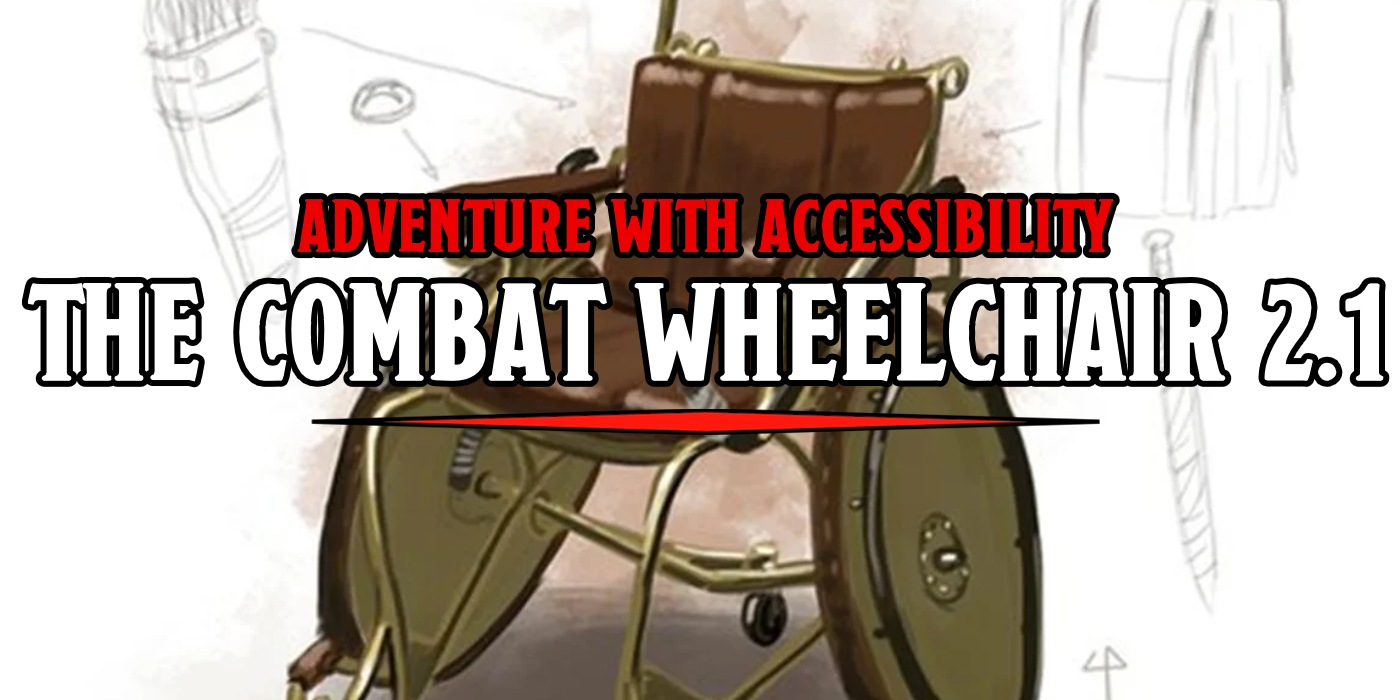

The Combat Wheelchair is back with an updated new ruleset that adds four subclasses designed use the chair, including Matt Mercer’s Blood Hunter.
Adventurers of all stripes will find something exciting in the latest from Sarah Tompson, aka @mustangsart, whom you might know as a writer for Cyberpunk Red, The Witcher, and Pathfinder, or more recently as the developer of the Combat Wheelchair. Which is a relevant mention because today we’re talking about the newest version of the Combat Wheelchair ruleset, which if you missed it the first time ’round, is a free module that adds a battle-ready wheelchair to Dungeons & Dragons, allowing players to create wheelchair-using heroes in a boost for representation of all types of adventurers, including those that need assistive devices.
The latest version of the Combat Wheelchair revamps the rules, and adds four new subclasses to the mix, each of which is designed to make use of the Combat Wheelchair, though they are by no means required to. Three subclasses are for core classes–the Paladin, Monk, and Warlock, and the fourth is for Matt Mercer’s own Blood Hunter class. Let’s check out what’s new in this edition.
As has been mentioned in the past, the wheelchair is designed for ease of use for adventurers–after all if D&D is going to play up the fantasy that you can wake feeling completely refreshed after sleeping for 8 hours regularly, it may as well make other parts of real life woes easier as well.
The Combat Wheelchair is designed for easy maintenance, application of Upgrades, and to be repaired by its user. Its simplicity in design is a necessity; an adventurer isn’t always able to find a smith, artificer, or tinkerer to pit stop at.
You have proficiency in Tinker’s Tools. You are also considered proficient in using your wheelchair as a weapon.
And overall the wheelchair is exactly what it was mentioned before, a battle-ready wheelchair that will run you about 200 gp for the basic version that comes standard with a suite of features that make it easy to use. Optional rulesets introduced in newer versions include rules for damaging the chair–though it’s a more dramatic system, as the Combat Wheelchair doesn’t have hit points. Rather, it can withstand 3 consecutive critical hits (defined as crits in the same encounter) inflicted by melee weapons or melee spells before it must be repaired using either Tinker’s Tools or Smith’s Tools, and damaging the wheelchair only hinders its functionality slightly.
Even a damaged chair can still be used for mobility or to ascend/descend stairs–the only thing that attacking the chair does is mean you run the risk of missing the chair entirely, as it can only be hit on a critical hit, and you have to say you’re aiming for the chair before you attack.
This is presumably to discourage GMs from targeting the chair out of spite–as the combat wheelchair is not a liability, but rather an empowering device for adventurers.
But that’s the overview. What about the Subclasses?
Blood Hunter – Order of the Syphonic
If you’re not familiar with the Blood Hunter class, it’s a class designed by Critical Role DM and voice actor Matt Mercer, and it’s all about using your blood to empower you to fight monsters:
Marred but resolute, his grimacing face dripping with sweat, a half-orc reddens a finger across his wounds to draw a glowing, ruby glyph in the air. He grips the weightless, completed sigil, twisting it to unleash dark magical energies that fire forward, cursing the stalking behemoth from within its own veins to better even the odds.
AdvertisementA mysterious half-elf swathed in a worn cloak and rugged leather armor carefully investigates a grizzly scene off the roadway, her eyes flashing with recognition as she meditates on the remnants of the massacre. The survivor who warily hired her withdraws with a jump as the half-elf suddenly shoots to her feet, sure in the knowledge of the culprit, where it calls home, and how little time there is to find it.
And the Syphonic Order is all about withstanding chronic pain, transforming it to be a source of strength. The Syphonic Order is all about coming to terms with disabilities and chronic illnesses, and allows you to use your Blood Hunter rites to deal additional psychic damage while protecting yourself from incoming harm.
Monk – Way of the Pandemonium
Monks who follow the Way of the Pandemonium are all about using the kinetic energy exerted on them, converting forces like friction and impact and pressure into powerful bursts of sound and other bombastic effects.
At 3rd level, you gain the ability to spend an extra ki point when using flurry of blows to transfer the flow of energy from the impact absorbed by your feet or your chair’s wheels to add a burst of force to your attack, making targets save or fall prone.
You can also spend a ki point to deal additional fire damage, redirecting friction that would be applied to you onto your enemy instead. And at higher levels you can deal sonic damage, and even reflect incoming damage.
Paladin – Oath of the Virtues
Oath of the Virtues paladins are all about using their mount–and for adventurers who use the Combat Wheelchair, the chair is considered a mount, and all spells and magical effects from this oath are shared with the wheelchair.
Upon accepting this oath, your paladin swears to uphold seven virtues: Courage, Justice, Mercy, Generosity, Faith, Nobility, and Hope. It’s extremely paladin-y, moreso than even the Oath of Devotion. And the abilities here reflect that. You can use Channel Divinity to either challenge a foe, compelling it to fight you, or you can lead a spectral charge that might frighten enemies. You also gain an aura of hope, as well as a special bond with your mount.
Warlock – The True Monarch
Warlocks of this patron have made a pact with a once and future monarch–a True Monarch that bestows regal grace and tremendous power upon those who follow it. You gain access to fiery spells, which can manifest as per the usual spell or somehow be connected to your wheelchair–a flaming blade might be a wreath of flames on the wheels of your chair, for instance.
You can also constantly conjure a crown, which gives you the ability to Charm or Frighten your enemies, as well as empower your attacks, dealing radiant damage or healing yourself as need be.
All in all, these classes are a fantastic new suite of tools to use. And the updated rules are free, and easy to add to any campaign. Check ’em out below.
The Combat Wheelchair v 2.1
Happy Adventuring!

